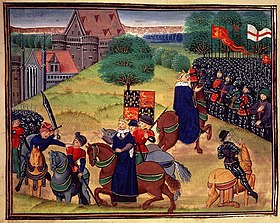
The Zanj Revolt (Arabic ,ثورة الزنج ) took place in Southern Iraq near the city of Basra between 869 CE and 879 CE. . They were led by ˤAlī ibn Muħammad, who claimed descent from ˤAlī, the fourth Caliph, in a campaign against the central government based in Samarra.
Many scholars have argued that "the Zanj" were slaves from East Africa since the term Zanj describes the East African coast. There were large numbers of people imported from East Africa via Somali and Ethiopian ports from interior as far as Southern Sudan. The slaves were mainly used to work on the massive irrigation projects of the area. Bedouins, Arab mercenaries, and others from the region joined ˤAlī's fight against the central government. The origin of the word "Zanj" comes from Arabic, and is related to the names in East Africa of "Zanzibar" which is also known to have 9th century links to the Middle East.
Reasons for the revolt
For roughly 14 years, they succeeded in achieving remarkable military victories and even building their own capital--Mokhtara, the Elect City, which was within 70 miles of Baghdad, along the Shatt Al-Arab. Moktara had huge resources that allowed the building of no less than six impregnable towns in which there were arsenals for the manufacture of weapons and battleships. .
End of Revolt
Much of the current knowledge of the Zanj Rebellion comes from the Persian Sunnī historian Tabarī's work "History of the Prophets and Kings". It has been the subject of research by such famous Orientalists as Theodor Nöldeke (Sketches from Eastern History) and Louis Massignon (The Passion of al-Hallaj); Alexandre Popović has authored a more recent monograph on the subject.
 See also
See alsoAfrican Presence In Early Asia, by Runoko Rashidi & Van Sertima By RUNOKO RASHIDI
African Holocaust: Dark Voyages

No comments:
Post a Comment